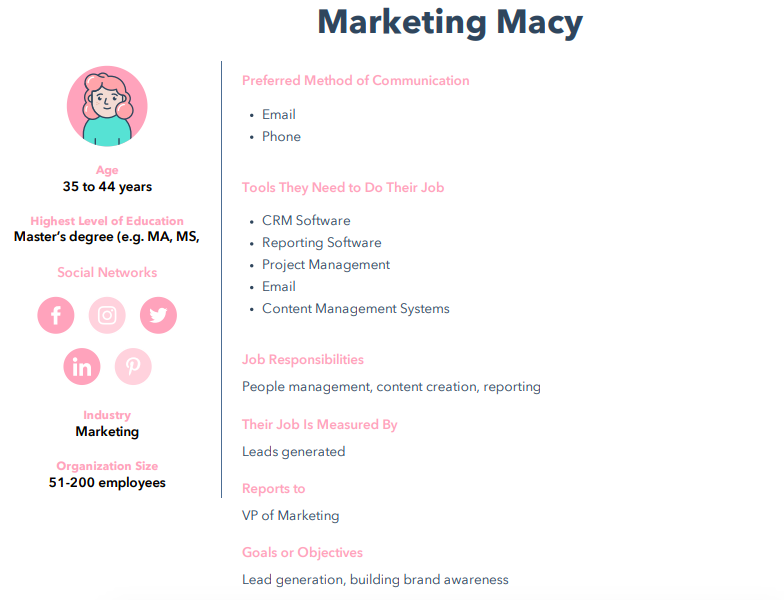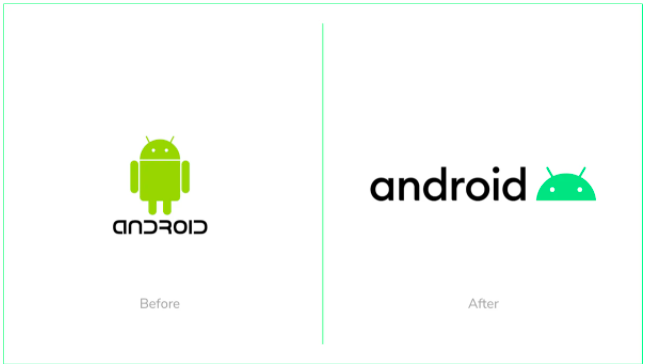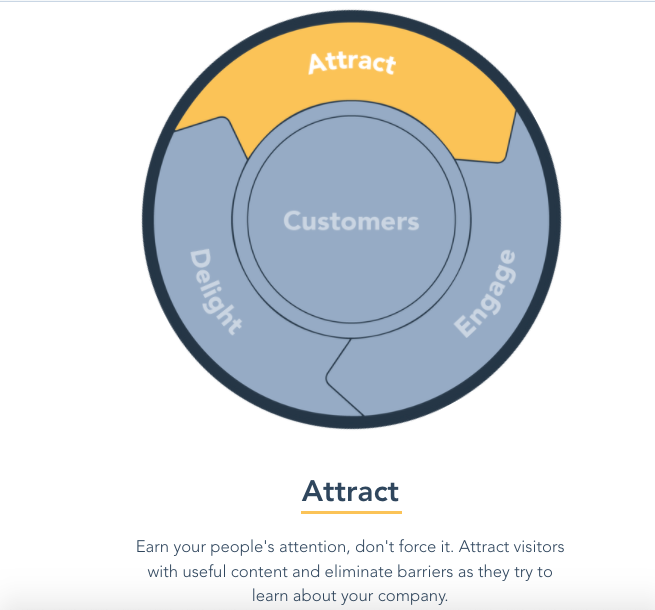In marketing, it seems like the word “brand” is used a lot — the leading brand, off-brand, personal brand … you get the picture.
But there’s often confusion around its meaning in business. What does it entail? Should you hire an expert?
Most of all — branding is expensive, right?
Not exactly. As it turns out, there are some creative ways to brand your business effectively without a ton of cash. And while it can require an investment of time, the ROI won’t go unnoticed — in some cases, it can actually help you save money, while also growing your business.
Building your brand is a crucial part of developing your business. It’s the foundation of giving your organization a voice, identity, value, and awareness among consumers. And, thanks to the plentiful number of resources, tools, and platforms available today, a brand build might not be as burdensome (or costly) as some think.
So read on, and see how you can use the following seven steps as a guide for your brand build.
How to Brand Your Business on a Budget
You don’t have to break the bank to grow and maintain a brand. In fact, you can complete most of these tips without spending money. The most important things to remember when brand building are to keep your customers in mind and deliver messages that support your company’s mission.
Below, let’s discuss a budget-friendly way to grow better on a budget.
1. Create a persona to understand your audience.
You’ve probably heard that knowing your audience is the key to creating marketing messages that appeal to them. A great way to get to know them? Create a buyer persona — a semi-fictionalized representation of the values and characteristics of your ideal customer.
Personas outline the challenges of that customer and where your business fits in to solving their problems. Below is an example of a buyer persona, Marketing Macy. Notice how my persona lists demographics, like age and education, as well as tools needed for the day-to-day, like a CRM.
 The needs, goals, and behavior of your potential customers dictate how you convey your product or service. So for Macy, I want to focus on a B2B strategy that caters to her goals of lead generation and brand building.
The needs, goals, and behavior of your potential customers dictate how you convey your product or service. So for Macy, I want to focus on a B2B strategy that caters to her goals of lead generation and brand building.
Understanding those goals helps you determine what kind of media your personas are consuming, what motivates them, and where they “live” online. This information allows you to develop a compelling, effective brand that reaches the right people.
Make your own buyer persona with HubSpot’s free MakeMyPersona tool, which guides you through a series of questions about your ideal customer. The tool is fun, interactive, and meant to get you thinking critically about who you want to reach with your brand and how you want to reach them.
2. Develop an identity and voice for your brand.
Once you’ve identified your buyer personas, your brand can start to take shape. Create a brand identity — what makes your brand, your brand — and its voice, which is the tone you use in any copy or public communication.
Developing brand voice and identity is similar to constructing your personas. But instead of answering questions about your target audience, you’re answering questions that are more introspective to your brand: What are your company’s values, what do they represent, and how do you want people to talk about you?
When you answer these questions, focus on creating content that supports them. Craft compelling emails, blogs, social posts, and multimedia that reflect your company’s mission, values, and how you want to appear to customers.
For example, if one of your values is to be accessible to customers, communicate contact information on social media pages and answer service questions that appear in comment sections.
Developing your voice comes through in the copy of that content. Are you going to use conversational language that relates to customers? Or will it be more beneficial to reach your audience from a technical standpoint?
For example, one of my favorite brands to follow is Glossier, a beauty company with a great understanding of brand voice.
When I tag the company in a photo on Instagram, I usually get a reply with one of their famous logos: An emoji version of a smile and wave (
 ). This logo appears on the bottom of marketing emails and packaging, keeping the brand consistent across multiple formats.
). This logo appears on the bottom of marketing emails and packaging, keeping the brand consistent across multiple formats.
Even if you’re not starting from scratch, establishing a strong(er) brand voice can be valuable. Just take operating system software service Android, for instance: Their 2019 rebrand was a logo re-up, making the design cleaner and modern:

The logo came from a need to speak to a shift in audience. Initially, Android’s target audience was the developer, but instead, the company has become more consumer-facing. The change was bred from this analysis.
3. Map out a consistent social media presence.
So, we know who your personas are. And now, we have an idea of what and how to create messaging that connects with them. But where are they?
Since you have a clear picture of what your audience is interested in, next, figure out where they’re spending the most time on social media. We’ve talked about how effective it is to reach people where they’re already present, and that includes their online behavior.
Don’t worry, you don’t have to play Inspector Gadget to figure out where your audience spends time online. Check out competitors — see where they’re most active (and how their language may or may not connect to audiences).
Additionally, look at how your audience interacts with social media. For instance, the highest percentage of U.S. men and women who use Facebook are between the ages of 24 and 35. So, if your persona fits that bill, focus your strategy on Facebook.
If you find the majority of your audience prioritizes one social network, you’ll have an idea of where to allocate your resources. But don’t ignore other sites. When you build a presence on multiple social media platforms, you’ll have an opportunity to diversify how you reach audiences. Diversifying the methods and channels you use for obtaining new leads helps you to connect with as many potential customers as possible.
Maintaining a presence is just as important as building one — for example, have you ever gone to a brand’s Facebook page, only to find that nothing has been posted in the past three months? Chances are, it didn’t have a positive impact on your perception.
That can be avoided by planning and scheduling social media posts, like you would with any marketing calendar. This free Social Media Content Calendar can help.
4. Start a company blog.
We’ve covered the importance of blogging before, and it can’t be emphasized enough. It’s a core part of the inbound marketing flywheel, especially the “attract” stage, which turns website browsers from strangers to visitors.

In fact, blogging is a fundamental step of inbound marketing. It helps you reach qualified customers, like your personas, by creating the content that matches what they’re searching for. That’s why it’s so important to make blog posts relevant to audiences (and optimize them for search engines — here’s how).
Customers are definitely looking for the information you’re able to provide. Plus, that content can serve as material to populate your social media networks. To find what your audience is searching for, conduct keyword research, which will tell you what the most important topics for your audience are via search engines.
While blogging is fiscally inexpensive, it does take time.
The inbound marketing version of that question would ask, “Would you rather blog for one hour each day and promote content created by and for your company, or several hours a day sourcing content for your ideal customer from your competitors?”
An editorial calendar is also helpful in maintaining consistent timing and fresh content on your blog. That’s why we put together a free blog editorial calendar template, complete with instructions and content management tips.
5. Make customer service a priority.
When we hear the name “Zappos,” most of us immediately think, “Unparalleled customer service.” The online apparel retailer built this level of service into its core approach to doing business.
Why is that so important? For Zappos, making excellent customer service the cornerstone of its brand actually saved money on marketing and advertising. That’s because it created word-of-mouth among existing and potential customers.
This is called earned media: The recognition that your brand has earned, not paid for, from people talking about something you did that was remarkable.
For example, when I’m shopping on a new website, the first thing I do is read reviews. If I see reviews that mention speedy shipping, friendly customer service, and high quality products, I’m more inclined to purchase.
This revisits the importance of your identity and voice. As you go through these brand-building steps, think about the values that you want your audience to experience, like excellent service. Those values are what shape the brand’s culture, and that influence the voice you project to an audience.
6. Take advantage of co-branding.
I’ll never forget what my colleague, Lisa Toner, says about negotiating co-branding agreements.
“Larger companies may have a large reach,” she explains, “But what do they not have?”
When you’re just starting to build a brand, you might not have the reach that Toner’s talking about. You can take the steps to build it, but that takes time. Until then, one way to get your name in front of a broader audience is to partner with a brand that does have that reach.
But don’t just pick any brand for a partnership. Make sure it’s one that’s aligned with yours so it makes sense in the minds of your audience. Here’s what we recommend in seeking a co-brand:
- Will your partner’s audience be interested in your brand? Is this audience difficult for you to reach without this partnership?
- Will your audience trust your co-brand. That’s crucial to getting them to listen to you, so make sure your partner reaches the audience in a way that instills confidence.
- Do you have something to offer your co-brand? Just like Toner asks, “What do they not have?” The experience should be a win-win-win: For you, your co-brand, and the consumer. As an example, if you have an international audience that your partnering brand doesn’t, consider pointing to that when discussing the partnership.
Building a brand might seem like a huge undertaking, especially when resources are limited. But there are plenty of economical ways to not only get started, but to continue the momentum.
And please, have fun with the process. Of course, there has to be a degree of strategy and logic involved — that’s why there’s tools to help you determine the different pieces of your brand. But it’s a creative exercise, so keep that in mind if you get bogged down in technicalities.
7. Host a masterclass or webinar.
What are some of the talents the minds at your company display on a daily basis? Are they masters of email marketing? Do they excel at coding? Do you earn a “World’s Best Brand Strategist” superlative every year?
A fantastic way to grow your brand — and earn leads — is to leverage these talents into a masterclass or webinar, and promote them online.
By optimizing your class with hashtags and witty captions, you’ll find audiences that are interested in the talents for which you’re offering lessons. These masterclasses can be a 45- to 60-minute session that provides an overview of your special expertise, how to do it right, and how use your own strategies to illustrate.
For example, if I were to offer a webinar, it would highlight the art of using emojis for business, an experiment I’m passionate about. I would start by describing why engaging copy is important for attracting customers. Then, I’d explain the pros and cons of emoji usage. Finally, I’d share the right and wrong times to include emojis in marketing messages.
After that, I would present an experiment and report on my findings. Whether the experiment supports or negates my thesis always leaves room for fruitful discussion — leading to the last portion, questions. Voila: An outline for a masterclass that uses my talents to back up the credibility of a business that focuses on, let’s say, marketing or social media.
Running experiments doesn’t have to cost a dime, and hosting a webinar takes only about an hour of your day. The result, however, is spreading the word about the talents of a company, providing data that supports credibility, and promotes company values like delighting customers and giving helpful, educational content to your audience.
Branding on a budget? Absolutely possible. What counts, when you’re brainstorming ways to brand effectively, is how to use the resources you have to the best of your ability. Keeping your audience in mind is the first step — after that, it’s about thinking of creative ways to engage those target customers.
Have fun with building your brand. After all, this is a creative process and while every experiment may not work, you can always learn to improve. Good luck, and happy branding.
![]()
Original Entry: 7 Steps to (Effectively) Branding Your Business on a Budget is shared from https://blog.hubspot.com/marketing/brand-your-business-on-a-budget via https://blog.hubspot.com/marketing
Check out the original post, 7 Steps to (Effectively) Branding Your Business on a Budget that is shared from https://putyourfamilyfirst.wordpress.com/2020/06/09/7-steps-to-effectively-branding-your-business-on-a-budget/ via https://putyourfamilyfirst.wordpress.com
No comments:
Post a Comment